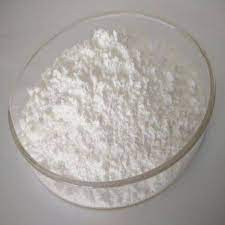
Dr Scott Kamelle: Vaginal Infections and Their Treatments
Vaginal infections can be a source of discomfort and disrupt your daily life. Understanding the different types of infections and their treatments is essential for finding relief and preventing future occurrences. Vaginal infections can result from various causes, such as bacteria, viruses, and fungi. Some infections are more common based on factors like age and sexual activity. In this article, we will explore two common types of vaginal infections and their treatments.
Yeast Infections:
Yeast infections are among the most prevalent vaginal infections and are caused by an overgrowth of the fungus Candida, which naturally resides in the vagina. When the balance of vaginal flora is disrupted, the Candida fungus can multiply, leading to an infection.
The hallmark symptom of a yeast infection is vaginal itching, which can vary in severity. Additional symptoms include redness and soreness of the vulva, a thick white discharge resembling cottage cheese, and pain during sexual intercourse.
The treatment for yeast infections is usually straightforward. Over-the-counter antifungal creams or suppositories are available, which you can insert into your vagina to combat the infection. It’s essential to continue treatment for at least a week after your symptoms resolve to ensure the complete eradication of the infection. If your symptoms persist or recur, consult your doctor for further evaluation and alternative treatment options Dr Scott Kamelle.
Bacterial Vaginosis:
Bacterial vaginosis (BV) is another common vaginal condition caused by an overgrowth of bacteria in the vagina, leading to an imbalance in the vaginal ecosystem. BV can make the vagina more susceptible to other infections and may cause symptoms like abnormal vaginal discharge with a strong fishy odor.
Treatment for bacterial vaginosis typically involves a short course of antibiotics, usually prescribed for five days. In cases where itching or discomfort accompanies BV, your doctor may also prescribe antifungal medication to be taken for two weeks.
It’s essential to consult your doctor if you suspect you have bacterial vaginosis or experience any unusual symptoms. Some women with BV may not notice symptoms right away, and it’s crucial to address the condition promptly to prevent complications, particularly during pregnancy.
Preventing Vaginal Infections:
While some vaginal infections may be inevitable, there are steps you can take to reduce the risk of developing them:
Maintain Good Hygiene: Wash the genital area with mild, fragrance-free soap and water. Avoid using douches or strong cleansers, as they can disrupt the natural balance of vaginal flora.
Wear Breathable Fabrics: Opt for underwear made of cotton or other breathable materials, as they help keep the vaginal area dry and prevent the growth of harmful bacteria.
Practice Safe Sex: Use condoms during sexual intercourse to reduce the risk of contracting sexually transmitted infections that can lead to vaginal infections.
Avoid Overusing Antibiotics: Excessive use of antibiotics can disrupt the balance of vaginal flora. Only take antibiotics when prescribed by your doctor and follow the recommended dosage.
Stay Well-Hydrated: Drinking plenty of water can help maintain vaginal moisture and reduce the risk of dryness and irritation.
Conclusion:
Vaginal infections can be uncomfortable, but most are easily treatable with the right medications. If you experience any unusual symptoms or suspect a vaginal infection, consult your healthcare provider for an accurate diagnosis and appropriate treatment. By maintaining good hygiene practices, practicing safe sex, and staying vigilant about any changes in vaginal health, you can take steps to reduce the risk of vaginal infections and enjoy better overall vaginal health Click here Dr Scott Kamelle.



